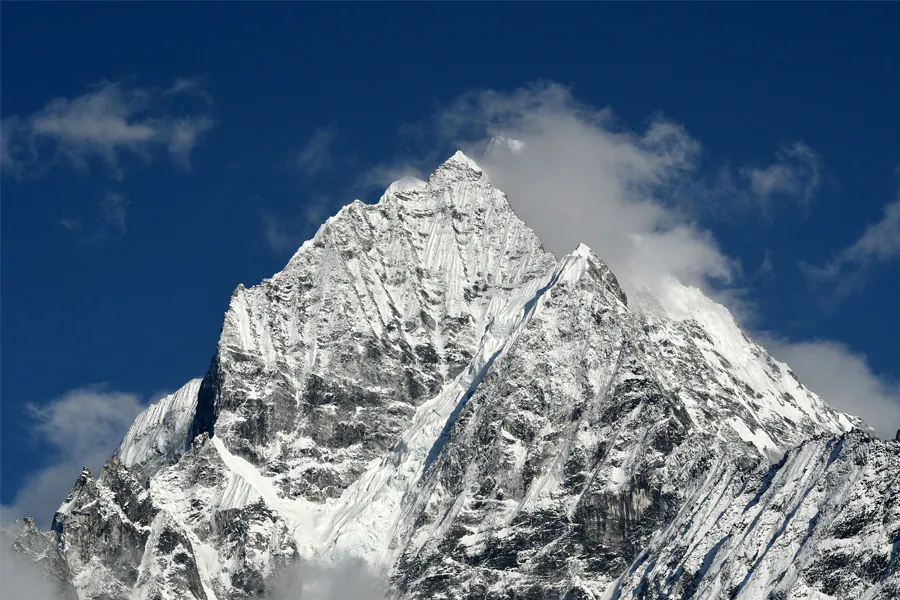Everest Base Camp trekking is one of the most iconic and rewarding adventures in the world. Set in the breathtaking Khumbu region of Nepal, this trek takes you through rugged mountain trails, vibrant Sherpa villages, and ancient monasteries, culminating at the foot of the world’s tallest peak—Mount Everest. At 5,364 meters above sea level, Everest Base Camp is not just a destination, but a life-changing journey.
Why Choose Everest Base Camp Trekking?
The trek to Everest Base Camp (EBC) offers a unique combination of natural beauty, cultural richness, and personal challenge. It is not just about reaching the base of Mount Everest; it’s about experiencing the landscapes, the people, and the profound sense of accomplishment that comes with each step.
From lush rhododendron forests to high-altitude glaciers, the variety of terrain keeps the journey exciting. You’ll pass through picturesque villages, cross suspension bridges draped in prayer flags, and enjoy views of towering peaks like Lhotse, Nuptse, and Ama Dablam.
Route and Itinerary
The classic Everest Base Camp trekking route begins with a short but thrilling flight from Kathmandu to Lukla. From there, the trail weaves through several key locations:
- Phakding (2,610m): The first overnight stop, located along the Dudh Koshi River.
- Namche Bazaar (3,440m): A vibrant Sherpa town and acclimatization hub with cafes, markets, and mountain views.
- Tengboche (3,860m): Famous for its monastery and panoramic backdrop of the Himalayas.
- Dingboche (4,410m): A resting point for acclimatization and a chance to explore nearby viewpoints.
- Lobuche and Gorakshep: The last settlements before reaching Everest Base Camp.
From Gorakshep, trekkers make the final push to Everest Base Camp, and many also ascend Kala Patthar (5,545m) for the best panoramic view of Mount Everest.
The round-trip trek usually takes 12 to 14 days, allowing for proper acclimatization and rest days.
Best Time to Go
The most popular seasons for Everest Base Camp trekking are:
- Spring (March to May): Warm days, blooming flowers, and clear skies.
- Autumn (September to November): Crisp air, minimal rainfall, and excellent visibility.
Winter (December to February) is less crowded but very cold, and monsoon season (June to August) brings heavy rain, making trails slippery and increasing the risk of flight delays.
Trekking Difficulty and Preparation
While the Everest Base Camp trek doesn’t require technical climbing skills, it is physically demanding due to its duration, elevation, and steep ascents. Trekkers should be in good physical condition and prepared for long days of walking, sometimes over rocky and uneven terrain.
Training 2–3 months in advance is recommended, focusing on cardio, strength, and endurance. Walking with a loaded backpack and doing stair climbs will help prepare your body for the trek.
Altitude sickness is a major concern, so proper acclimatization, hydration, and pacing are essential. Many trekkers take rest days and consider using medications like Diamox to prevent altitude-related illness.
Accommodation and Food
Teahouses, which are local lodges offering food and shelter, are the standard form of accommodation on the EBC trail. Rooms are simple but comfortable, usually with twin beds and shared bathrooms.
The food is hearty and designed to keep you energized. Common meals include:
- Dal Bhat (rice and lentils) – a local favorite that provides lasting energy
- Tibetan bread and porridge – popular breakfast items
- Noodles, fried rice, and soups – available at most teahouses
- Hot drinks – like tea, coffee, and hot lemon to stay warm and hydrated
As altitude increases, food prices also rise due to the difficulty of transporting supplies.
Cultural Highlights
The trek provides a deep cultural experience as it passes through traditional Sherpa villages and Buddhist monasteries. You’ll witness prayer wheels, mani stones, and colorful prayer flags fluttering in the wind. Tengboche Monastery, one of the most spiritual stops on the trek, offers a chance to observe Buddhist rituals and soak in the peaceful atmosphere.
The Sherpa people are known for their warmth, resilience, and mountaineering history. Interacting with locals adds a rich human connection to the trek.
Environmental Responsibility
As the popularity of Everest Base Camp trekking grows, so does the need for sustainable travel practices. Trekkers are encouraged to minimize their environmental impact by:
- Carrying reusable water bottles and avoiding plastic waste
- Disposing of trash properly
- Respecting local customs and wildlife
- Using eco-conscious trekking agencies
Supporting local businesses and choosing ethical travel providers helps preserve the beauty and integrity of the region for future generations.
Final Thoughts
Lukla Flight is more than just a hike—it’s a journey that challenges your body, uplifts your spirit, and immerses you in one of the most spectacular landscapes on Earth. Whether you’re chasing a dream or seeking a transformative experience, trekking to Everest Base Camp is an unforgettable adventure that stays with you long after you return home.l connection with both people and place, Tsum Valley delivers a rare and rewarding experience.





